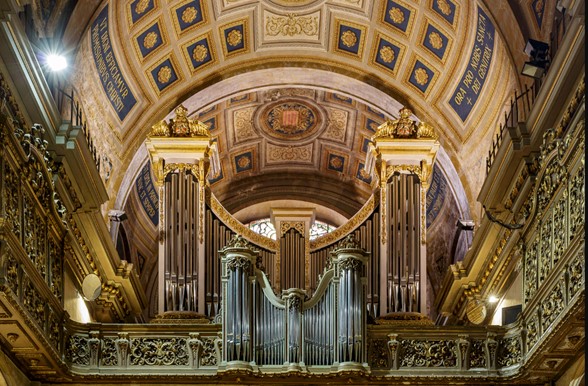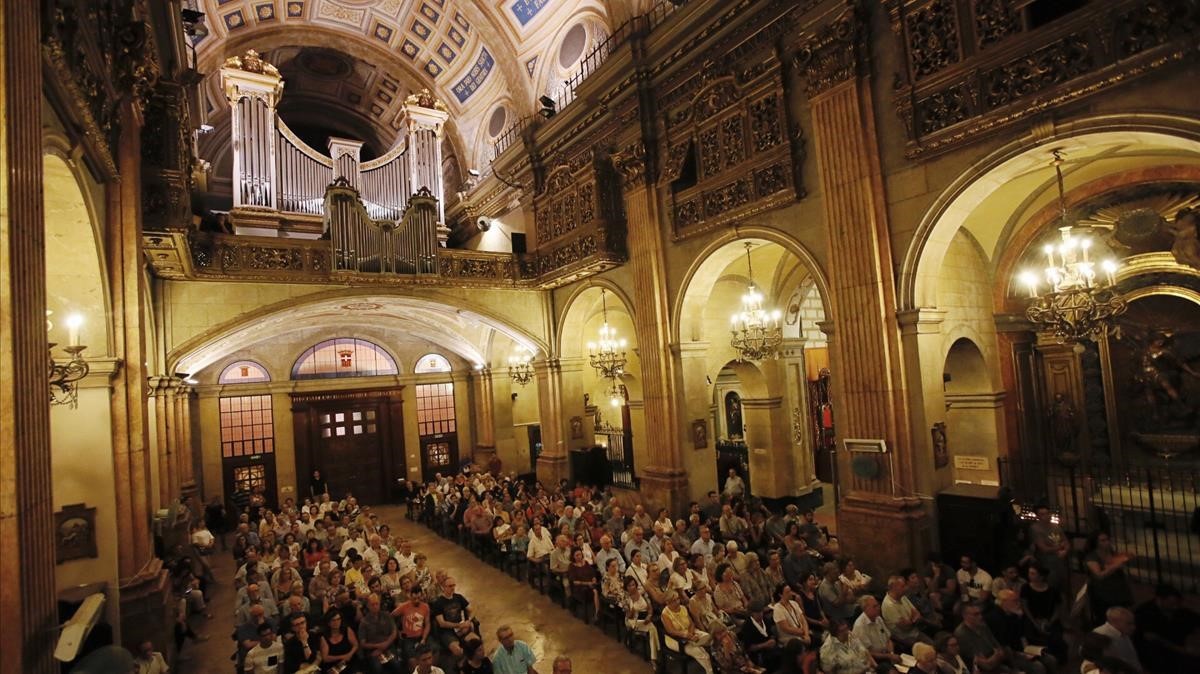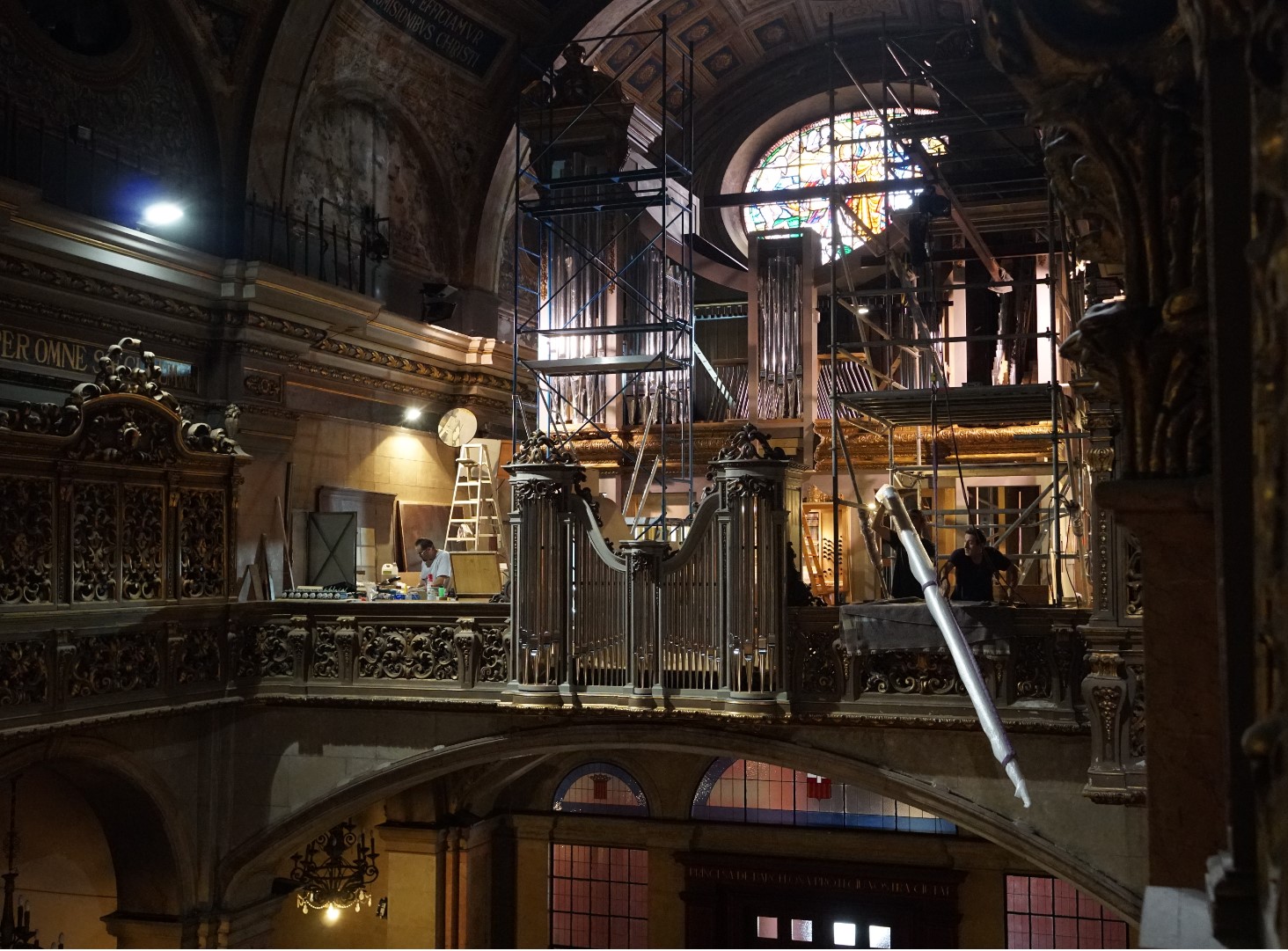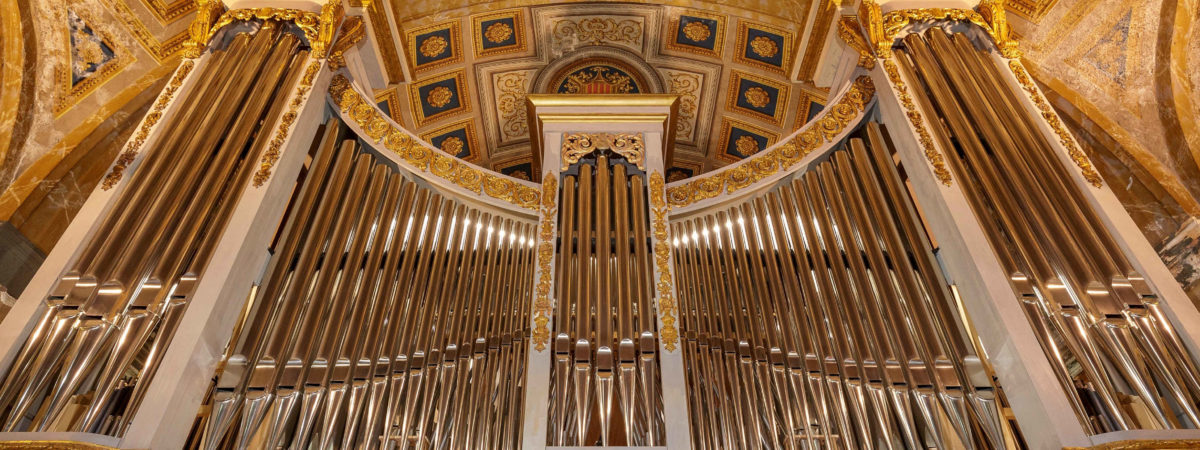In line with Mercè Barcelona Festival we present you the Basílica de la Mercè
In our previous post, we reported on the most recommended activities around the celebration of the “Fiesta Mayor” of Barcelona. It is celebrated from September 20 to 24 following the feast of the Virgin of Mercy, (in catalan, Mare de Deu de la Mercè) patron of the city since 1687.
In this publication we present you the Basilica of Our Lady of Mercy and Saint Michael the Archangel (in Catalan, Basilica de la Mare de Déu de la Mercè and Sant Miquel Arcàngel). A wonderful baroque architectural work located in the Plaza de la Merced, in the Gothic Quarter of Barcelona. It was built between 1765 and 1775 by the Catalan architect José Mas Dordal.
And we also would like to give our support by spreading the sponsorship campaign that the Basilica de la Mercè has managed to recover its spectacular organ of 23 records and 1,236 tubes, and which is still open to new contributions.
Do you know the history of the Basilica de la Mercè?
The current church stands on a previous medieval era that had an extension in Gothic style in the fourteenth-fifteenth centuries. It belonged to a set of church and convent of the Mercedarian Order. With the confiscation in 1835, it first became a school and, currently, the headquarters of the General Captaincy of the Fourth Military Region.
In 1918, it received the title of minor basilica, granted by Pope Benedict XV, in commemoration of the seventh centenary of the apparition of the Virgin to Saint Peter Nolasco, founder of the Mercedarian Order.
What are the most relevant architectural elements?
The interior of the basilica was built with a Latin cross plan, a large central nave and two lateral naves, in front of the chapels and located between the buttresses, of the Gothic period and a dome transept on the cruise.
La Mercè stands out for its monumentality, its delicate decoration in Rococo style, with rich cladding in marble and stucco as well as complicated latticework in the high stands. The valuable image of the Mare de Déu de la Mercè is a gothic work of 1361, attributed to the sculptor Pere Moragues.
The majesty of the organ contrasted with its precarious state
“The previous instrument was a work of Cayetano Estadella, who completed a first stage in 1941 with the construction of the box, the four manual console, the wall cabinet, and two of the keyboards, leaving 23 records and 1,236 tubes in operation.
Various vicissitudes, such as the death of the same builder in 1944 and the difficulties of the postwar period, were the cause of this organ never being able to develop all the possibilities foreseen in the original project.
This body has had several attempts to be able to be finished, such as that of the organizer and brother-in-law of Estadella, Pau Xuclà or the last in charge of Dutchman E. Ottes who, in 2000, built a new 3-keyboard console and installed a mechanical transmission without to finish the work, leaving an unfinished and chaotic instrument.
Barcelona “International city of organs”
Few European cities can hold as Barcelona a title as “international city of organs”. Other models would be, although with limitations, Paris and Brussels. Since the fourteenth century, the city has been the meeting point for teachers from Germany, Flanders, France and Switzerland who have exchanged their knowledge with local “organeros”.
As a result, it has been the Catalan organera school with exceptional works in size and highly developed musical resources since the 16th century. Another example of great importance is the instrument of Johann Spinn von Neuern in the basilica of Santa Maria del Mar in Barcelona around 1480; and the facade of the cathedral organ with its large pipes dating from 1539, the work of master Pere Bordons (1547) and his companions Peris Arrabasa and Fermin Granollers.
The Mercè organ was lost in the civil war, it had been created at the end of the 18th century by Jean-Pierre Cavaillé, founder in Barcelona of the Cavaillé Coll dynasty, and later exponent and reference for the romantic organs of the 19th century worldwide .
Do you want to leave your mark in Barcelona? You can still sponsor a Mercè organ tube
The new La Mercè body has been made possible thanks to the support of the “la Caixa” Foundation, the Generalitat de Catalunya and donations from individuals and companies that have wanted to leave their mark in Barcelona and show their support for culture and music.
The tubes can be sponsored from just € 50. In exchange for their contribution, sponsors and godmothers are offered:
- The satisfaction of leaving its mark in the heart of Barcelona
- The complete list of donors will appear on a plate when the organ is finished
- The same list will be hidden in the “Time Capsule” where different materials will be included that will document the construction process of the new organ.
Check all the information here
Barcelona presents its best organ coinciding with the “Fiestas de la Mercè”
The “new” organ of the Basilica of La Mercè made by the master organizer Gerhard Grenzing will be officially opened coinciding with the Fiestas de la Mercè this year.
The majestic instrument has three keyboards and bottom bracket, approximately 3,000 tubes distributed in 42 different registers.
Are you going to miss an organ concert in the Basilica de la Mercè?
We highly recommend you the night visit together with the organ concert next September 14 at 8.30 pm, a luxury that will make you enjoy in every way.
Check in this link all the possibilities of guided tours offered by the Basilica de la Mercè.
For more information and ticket purchase click here





